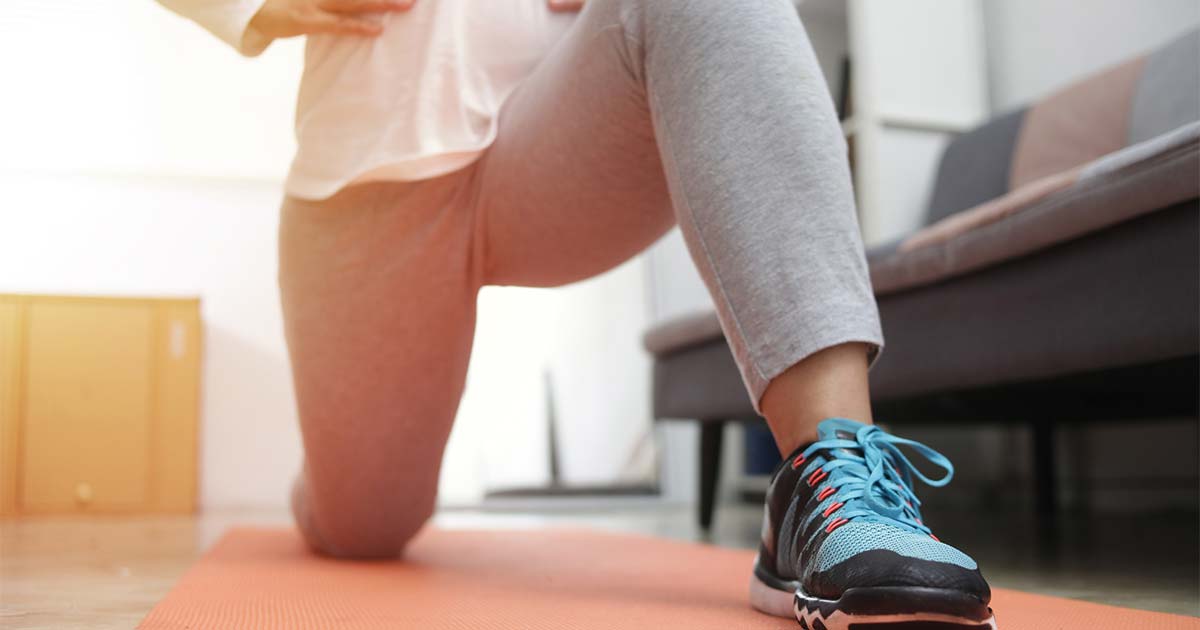How to Avoid Fatigue from Working Out
Advice to improve your movement, fitness, and overall health from the world's #1 in orthopedics.
Fatigue is your body's way of adapting to a fitness regimen and making you aware that you have reached your limit. So while you can’t completely avoid exercise fatigue, the following healthy lifestyle changes and tips can help keep you from hitting a wall in your workout.

1. Eat a well-balanced diet.
Your daily food intake should include complete proteins (such as meat, eggs and milk, or quinoa, chia seeds and soy if you follow a plant-based diet), fruits, vegetables and carbohydrates. The amount of carbohydrates you eat should be about 40-60% of your caloric intake for aerobic athletes and 30-35% for anaerobic (nonaerobic) athletes. This will maintain your muscles’ glycogen levels, which are depleted during exercise. Protein consumption should account for about 20-30% of your caloric intake and healthy fats should make up the remaining 10-15%.
2. Time your food intake to your exercise.
Eat a light meal or snack about two hours before working out. Try to avoid working out on a full stomach or an empty stomach. Also make sure to eat within one hour after your workout. This meal should be high in protein as it will aid muscle recovery and help your muscles repair from the stresses that exercise places on them.
3. Drink more water.
Drinking water throughout the day and during exercise is crucial to prevent dehydration and muscle fatigue. Try to drink 10 to 12 8-oz glasses of water daily and 7 to 10 ounces of water every 10 to 20 minutes while exercising. This will replace the water that is lost due to sweating.
4. Improve your aerobic capacity.
As your respiratory muscles begin to fatigue, oxygen is redirected from your limbs to your diaphragm. One way to improve your endurance is to gradually increase your aerobic capacity with interval training. You can also increase aerobic capacity by changing things up from time to time and incorporating different types of exercise. Say you’re a runner who hits the pavement four to five times a week. Instead, think about swapping out one or two of your runs for a bike ride or a swim.
Cross training, or mixing both aerobic and strength-based workouts, is another option that has been shown to be beneficial in improving aerobic capacity. Whatever method you choose, as your endurance increases, the added boost of oxygen in your blood will keep your muscles working for longer periods of time and prevent lactic acid buildup.
5. Use correct form.
Pay attention to muscle imbalances and incorrect movement patterns. The right strength and flexibility will help you achieve correct form during exercise. If you can’t perform an exercise with proper form, you should either decrease your weight or modify the exercise. Improper body mechanics decreases efficiency and burns more energy than necessary. Use a mirror to help provide visual feedback. This allows you to see if you are using correct form as well as highlights where adjustments in technique need to be made.
6. Rest and recover.
Complete a warm-up and cool down for 5 to 10 minutes each time you exercise. Start off slowly and steadily increase the intensity of your workouts so that your muscles are gradually challenged and can build over time. A dynamic warm-up, such as foam rolling, dynamic stretching and mobility exercises, is a great way to get the body primed and ready to move.
Allow adequate rest between workout sessions and strength repetitions. Make sure the rest break is enough to catch your breath between exercise sets. Listen to your body; fatigue is a sign that recovery has not taken place yet. If that is the case, then perform active recovery, which means participating in low-impact, low-intensity exercise such as walking, light swimming or yoga. Do not return to higher-intensity exercise until you feel fully recovered and recharged.
Lastly, the most important thing for recovery is sleep. Make sure that you are getting plenty of rest and allowing your body to repair after working out.



